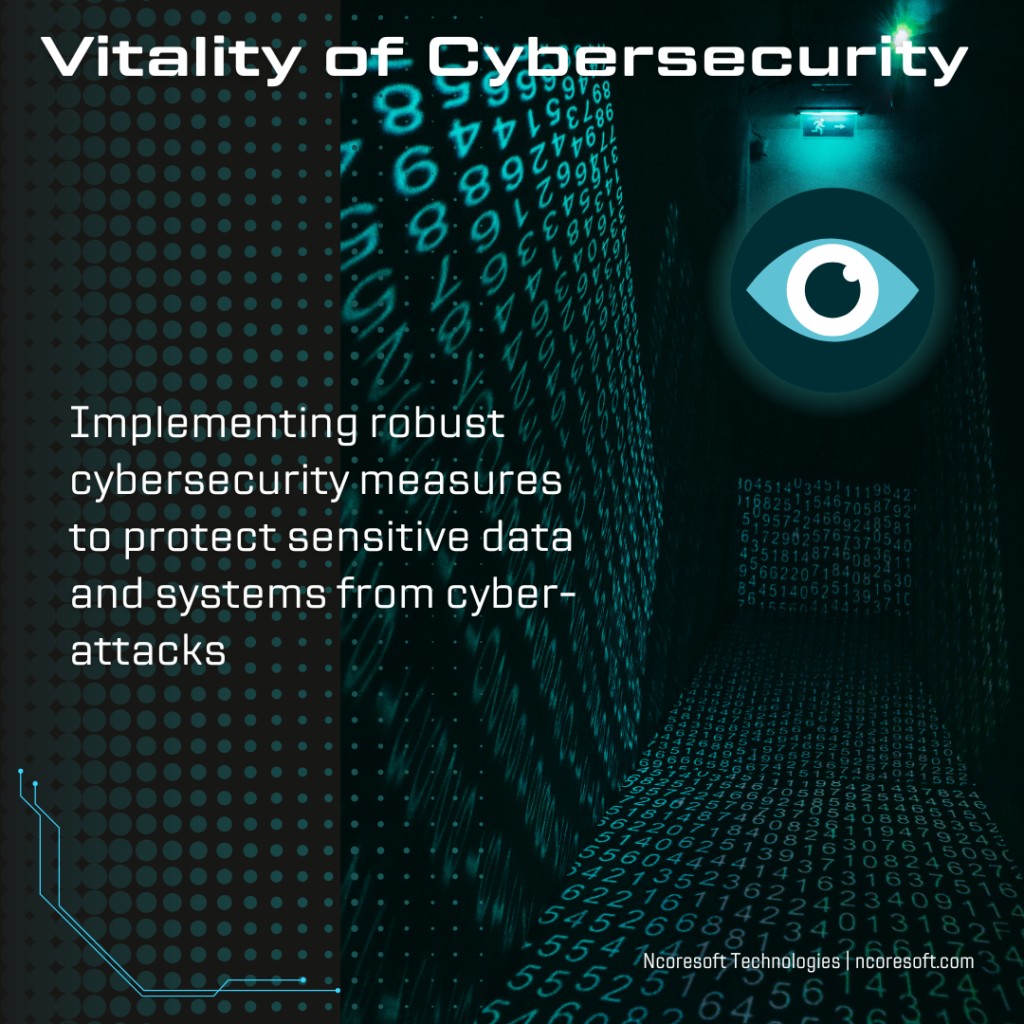In an increasingly digitized world, web applications have become the backbone of modern business operations. From e-commerce platforms to online banking, these applications empower users by offering convenience and accessibility. However, amid this convenience lies a critical concern: cybersecurity.

Why is cybersecurity crucial during web application development?
- Protecting Sensitive Data: Web applications often handle sensitive user information, including personal details, financial data, and proprietary business information. Cybersecurity measures are paramount to safeguard this data from unauthorized access or breaches.
- Preventing Data Breaches: Cyberattacks, if successful, can lead to data breaches causing severe financial losses and reputational damage. Robust cybersecurity protocols implemented during development can mitigate these risks.
- Maintaining Trust: Users trust web applications with their information. A breach not only compromises this trust but can also result in legal consequences due to non-compliance with data protection regulations.
Key considerations by certified Ncoresoft developer for cybersecurity in web application development:
- Secure Coding Practices: Developers must adhere to secure coding practices to prevent vulnerabilities like SQL injection, cross-site scripting (XSS), and insecure direct object references. Regular code reviews and vulnerability assessments are crucial. At Ncoresoft, we make sure to check how exposed will the software be, based on various parameters like number of users, location of majority of end-users, test cases to break the security of existing market peer etc. Based on that experience we code following best practices.
- Authentication and Authorization: Implementing robust authentication methods such as multi-factor authentication (MFA) and ensuring proper authorization levels are essential to control access to sensitive data.
- Data Encryption: Utilizing encryption protocols to protect data both in transit and at rest adds an extra layer of security, making it significantly harder for unauthorized entities to access sensitive information. At Ncoresoft, All passwords are stored in database for every project only after getting encrypted by MD5 or AES 256 algorithm.
- Regular Updates and Patches: Continuous updates and timely application of security patches help address known vulnerabilities, minimizing the risk of exploitation by cyber threats.
- Penetration Testing and Risk Assessment: Conducting regular penetration testing and risk assessments can identify potential vulnerabilities and weaknesses in the application’s security posture before they can be exploited.
- Secure Development Lifecycle (SDL): Integrating security at every stage of the development process ensures that cybersecurity isn’t an afterthought but an inherent part of the application’s design and deployment.
The evolving landscape of cybersecurity:
Cyber threats are continuously evolving, and so must the cybersecurity measures. Technologies like Artificial Intelligence (AI) and Machine Learning (ML) are increasingly being integrated into cybersecurity frameworks to detect and respond to threats in real-time.
Furthermore, as the Internet of Things (IoT) expands, securing web applications that interact with IoT devices becomes increasingly critical. These devices often introduce new entry points for cyber threats, necessitating enhanced vigilance in application development.
In conclusion, the importance of cybersecurity in web application development cannot be overstated. It’s not just about creating functional and user-friendly applications but also ensuring they are resilient against a multitude of potential cyber threats. By prioritizing cybersecurity from the inception of development, organizations can fortify their applications against malicious attacks, thereby safeguarding sensitive data and maintaining user trust.